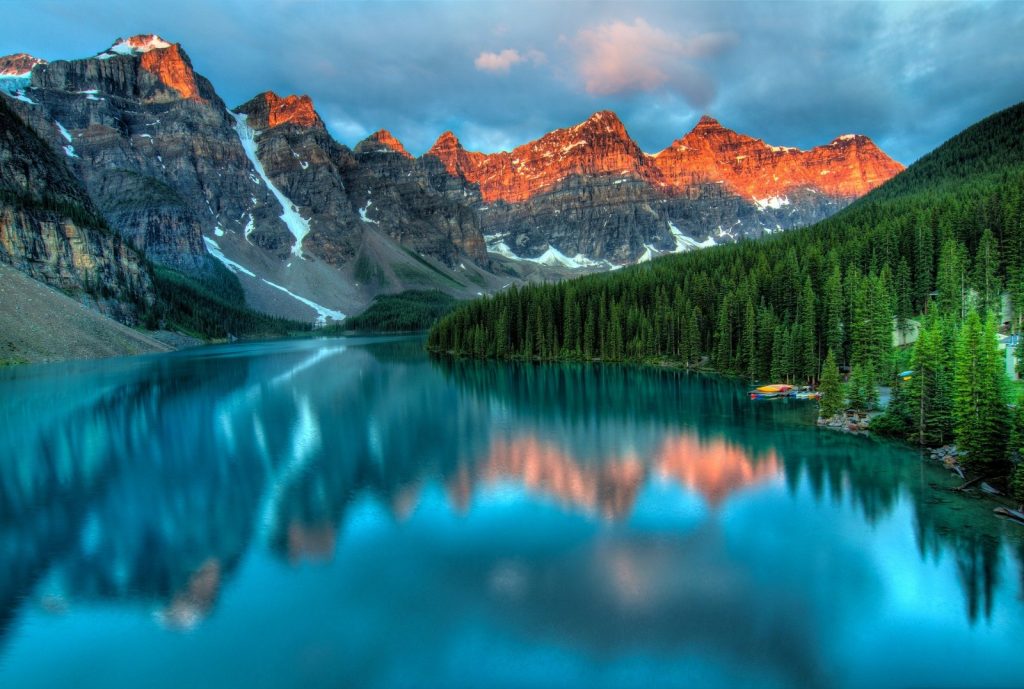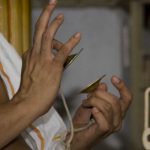The Unfathomable Color Blue
Blue is the king among all colors. It is hands down the most popular color in the world, among both men and women in almost every country. Blue is appealing to people, intriguing to researchers, and divine to the spiritually minded. It is pleasing to the eye and calms and soothes the mind; yet it is powerful, both scientifically and spiritually. In the scientific sense, its short wavelengths have the highest energy in the visible light spectrum. Spiritually speaking, it is the color of the Infinite, the color that Bhagavan has chosen for Himself. It is said that a blue light shines in one’s heart when one progresses in dhyana, irrespective of the aspirant’s spiritual path or even religion.
In nature, this powerful blue appears to be ubiquitous around us. The omnipresent sky is blue. The vast oceans, seas, and lakes are blue. Yet, apart from these two pervasive aspects of nature, believe it or not, blue is extremely rare in natural landscapes and life forms.
Look out your window. Or go to a park. How many leaves, flowers, insects, birds, animals, or stones do you see that are naturally blue? Maybe some bluebonnets or a couple of blue jays, if you are in Texas in springtime; or perhaps a few peacocks if you are in a place like Vrindavan or Sivakasi. But these are not very commonplace for us; nor are the true blue minerals or rocks, or other species of flora and fauna that sport blue; even to researchers who go hunting for them.

Source: www.pixabay.com
Scientists and writers have explored how the color blue is rare in nature. Natural blue pigments have been historically rare (and hence prized by some ancient cultures) because there were very few minerals or rocks from which they could be made. Research has also discovered how the few blue flowers and blue-winged butterflies actually have completely different ‘blue-producing’ mechanisms. Blue flowers and blue minerals look blue to us because the pigments or crystal structures in them absorb lower energy wavelengths of light and reject the high energy (blue) wavelengths. So, the color they reject is the color we see them as. On the other hand, the rare blue that we see in birds, insects, and animals is mostly the result of the unique manner in which the cell structures on their wings, feathers, or skin are arranged – in such a way that it reflects only the short blue wavelengths of light.
“With blue, it’s like a whole canvas that you can still paint on. Maybe because it is rare in nature and maybe because we associate it with things that we can’t really touch, like the sky and the sea, it’s something that is very open to different associations,” says writer Kai Kupferschmidt, author of a recently published book, “Blue: In Search of Nature’s Rarest Color.”
It is amazing and intriguing how the world’s most popular color is, in nature, both the most ubiquitous as well as the rarest to occur.
While answering a question about why Krishna was blue, our Sri Swamiji said, “The sky is vast and grand. It is actually colorless. But we see it as blue. The ocean is vast and grand. Water is actually colorless. But it appears blue to us. All that is grand, vast, and all-pervading appears blue. Similarly, our Krishna is also All-Pervading, and we say that He is blue in color.”
So for us, blue is the color Krishna chose for Himself, and hence it is divine. Anything associated with blue is grand, vast, infinite, all-pervading, and also rare to be seen. Just like Krishna is. No wonder then that it is also unfathomable.
Nisha Sriram, Houston, TX
************************************
Click here to go back to the Sep 2021 newsletter page:
http://godivinity.org/newsletters/nama-dwaar-newsletter-september-2021/
************************************






